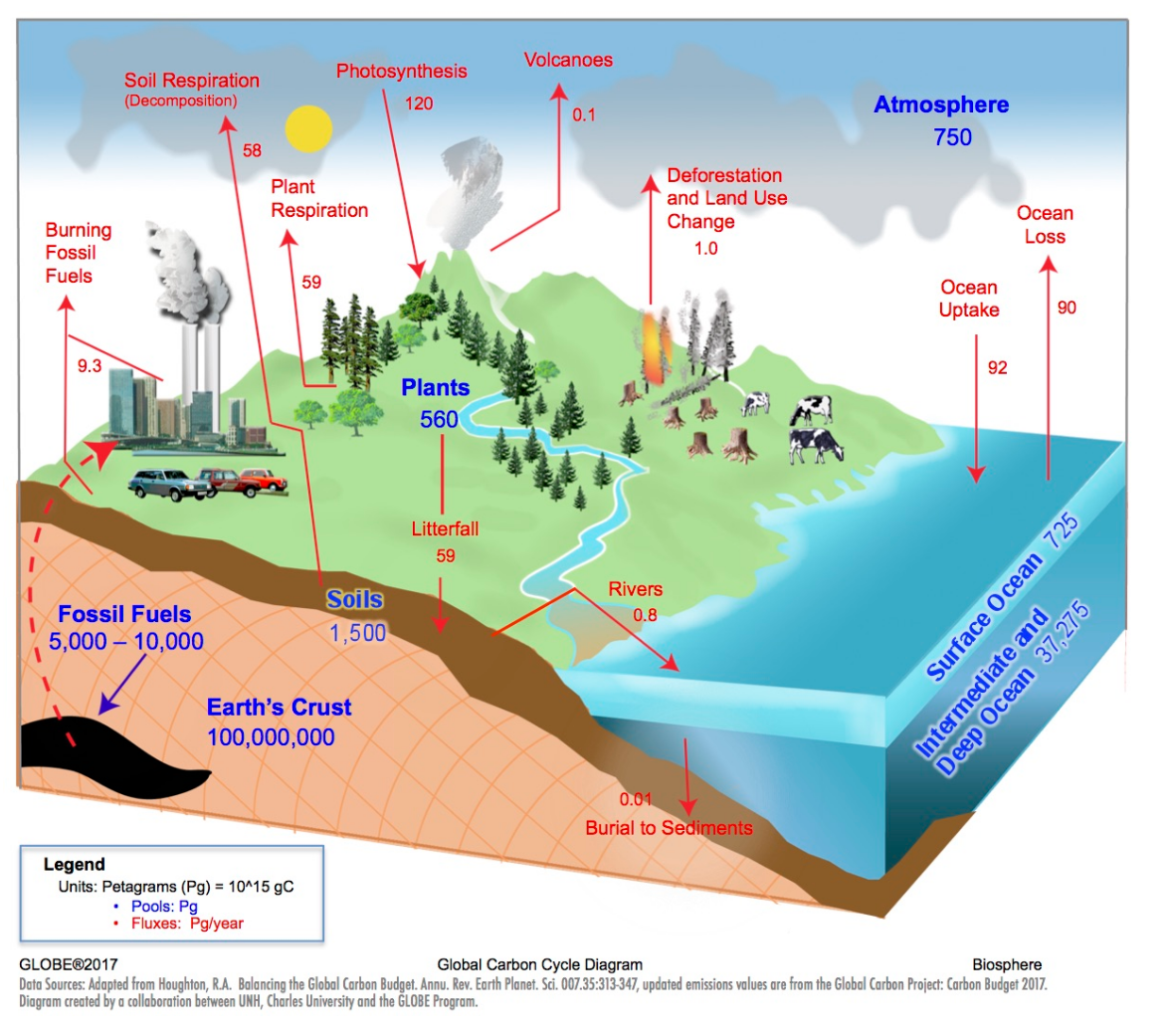Carbon Cycle
GLOBE Carbon Cycle protocols, modeling and learning activities can be found at: https://www.globe.gov/web/biosphere/protocols/carbon-cycle.
The GLOBE Carbon Cycle Project is one of the four Earth System Science Projects funded by NASA and The National Science Foundation to develop hands-on, science-based activities for intermediate and secondary school students in the GLOBE Program.
This project focuses on adapting cutting-edge research and data collection techniques within the field of terrestrial ecosystem carbon cycling for a classroom environment. To accomplish this goal, the GLOBE Carbon Cycle Project uses a systems-level approach to establish a foundational knowledge of how carbon flows through our ecosystems and its relationship to climate and energy. The included materials also incorporate a diverse set of activities focused on upper-middle and high school students. Within the project, there are:
-
Introductory Learning Activities: Hands-on activities that use a systems-level approach to understanding the global carbon cycle while introducing important concepts such as pools, fluxes and equilibrium.
-
Plant-a-Plant Experiments: Hands-on cultivation experiments for the classroom, with options for structured, guided or open levels of inquiry.
-
Protocols and Field Learning Activities: Projects designed to build the skills necessary to collect and analyze data. Students can then use these skills to determine the biomass and carbon storage in the vegetation near their school or measurement site. Additionally, there are instructional guides for uploading and interpreting gathered data. These protocols can be done with Standard (homogeneous vegetation) or Non-standard (school yard, city park) sites.
-
Modeling: Computer models — at varying levels of complexity — to help students predict the change in biomass and carbon storage over time while also allowing them the opportunity to use an important scientific tool.
-
Teacher Support: A collection of supplementary materials for instructors, including:
-
Comprehensive eTraining modules
-
Next Generation Science Standards (NGSS)-correlated materials
-
Ready-to-use assessment materials
-
Background information on carbon, systems, models and inquiry teaching
-
To learn more about the GLOBE Carbon Cycle, visit GLOBE's Biosphere protocol page or review the relevant eTraining modules. For a visual representation of how carbon cycles through the global ecosystem, see the infographic below:






